What's New
Displaying results 1961 - 1970 of 4052
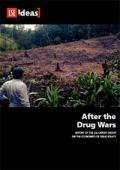
Resource | Publications,
The 'war on drugs' has been largely discredited on the international stage. Former and sitting presidents, Nobel Prize winners, heads of UN agencies and other world leaders have all in some way rubbished the idea of the international community waging war against already marginalised groups of people as a way to prevent substance use or misuse. It is for this reason that the UN General Assembly Special Session (UNGASS) in April 2016, whatever the explicit consensus outcomes, represents the global end point in a failed and counterproductive strategy. The question now is what comes after the drug wars.
This report suggests a new set of guiding policy principles for both the national and international levels. First, replace prohibitionist drug policy goals with the Sustainable Development Goals (SDGs). Second, drastically expand public health approaches, including harm reduction services. Third, apply the principles of harm reduction to supply-side policies and management of illicit markets. Fourth, utilise inherent flexibilities within the conventions to engage in rigorously monitored social scientific policy experimentation, conforming to strict public health and human rights principles.
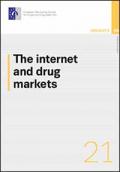
Resource | Publications,
Searching on the internet today can be compared to dragging a net across the surface of the ocean. While a great deal may be caught in the net, there is still a wealth of information that is deep and, therefore, missed. Similarly, drug markets can make use of the various levels of the web in order to operate. There is the surface web, often used for illicit medicines and new psychoactive substances, and also the deep web, with its dark net markets or cryptomarkets, supported by innovative technologies to protect privacy. Furthermore, the proliferation of social media and development of web technologies that allow greater user interaction have the potential to influence customer and user involvement in drug markets.
This report is destined for both readers with a previous specialised knowledge and those trying to gain insight into a new and rapidly evolving topic. Along with information on what the deep web is, how it operates, the role of ‘The Onion Router’ in the anonymous sale and purchase of illegal drugs, the role of encryption and cryptocurrencies, the content raises certain questions. For example, how will illicit drugs be marketed and trafficked in the future? Are the current tools and responses fit for purpose? How can the EMCDDA address the challenges of monitoring such a dynamic and fast-changing environment?
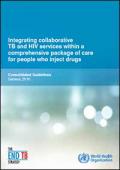
Resource | Guidelines,
These new guidelines aim to reduce morbidity and mortality related to TB and HIV-associated TB among people who inject drugs (PWID) through the integrated delivery of a comprehensive and holistic package of care. The guidelines provide an update to the 2008 Policy guidelines for collaborative TB and HIV services for injecting and other drug users: an integrated approach, and consolidate the latest recommendations relating to the management of TB, HIV-associated TB, HIV, viral hepatitis B and hepatitis C, and drug dependence. Although the main focus of this guidance is to benefit PWID, many of the recommendations are also relevant for those who use drugs and do not currently inject, but are in need of the respective services.
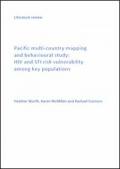
Resource | Publications,
The Pacific Island countries and territories (PICTs) are a group of small island nations that are particularly diverse, with widely varying political regimes, cultural norms and languages. Most information on newly detected HIV cases in the Pacific has been obtained from routine HIV testing. Sexual transmission is established as the predominant mode of transmission (95%), with varying shares of heterosexual versus male-to-male transmission between sub-regions (for example, Micronesia, Melanesia, Polynesia) and countries within sub-regions.
This review will describe the extant literature on key populations vulnerable to HIV in order to inform a mapping and behavioural study that will provide a baseline for the implementation of the Integrated HIV/TB multi-country grant in the Pacific and for the Pacific Regional Sexual and Reproductive Health Programme, by providing quantitative and qualitative data to inform relevant interventions aiming at reducing the HIV and STI risk vulnerability of key populations, as well as consolidating and generating specific evidence to evaluate barriers to prevention, improve effectiveness of prevention interventions, and develop a strong advocacy case for legal and social transformation. In many Pacific countries, there is a dearth (or even a complete lack) of data about each of the key populations.

Resource | Guidelines,
Sexual violence against children and adolescents is universally condemned but occurs much more frequently than people realize. It is a global human rights violation of vast proportions, with severe immediate and long-term health and social consequences. This document serves as a companion guide to the 2012 Clinical Management of Children and Adolescents Who Have Experienced Sexual Violence: Technical Considerations for PEPFAR Programs which provides step-by-step guidance on the appropriate clinical/forensic care for children and adolescents who have experienced sexual violence and exploitation.
The companion guide provides a basic framework, examples, resources, and contact information for health providers and managers to better understand and facilitate linkages with critical social and community services for comprehensive care of children and adolescents who have experienced sexual violence and exploitation beyond the clinical exam, take additional steps to help children and adolescents receive the information and support their needs, contribute to changes in sociocultural norms that perpetuate a culture of violence and silence that can also increase HIV risk and vulnerability.
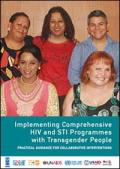
Resource | Publications,
While all transgender people are potentially at risk of HIV infection, transgender women have borne the epidemiologic brunt of HIV disease. Transgender women are significantly and disproportionately affected by HIV globally. Time and again, when HIV data specific to transgender women are gathered, they indicate disturbing levels of HIV disease and burden.
This tool describes how services can be designed and implemented to be acceptable and accessible to transgender women. To accomplish this, respectful and ongoing engagement with them is essential. This tool gives particular attention to programmes run by transgender people themselves, in contexts where this is possible. It is itself the product of collaboration among transgender people, advocates, service-providers, researchers, government officials and non-governmental organizations (NGOs) from around the world, as well as United Nations agencies, and development partners from the United States.
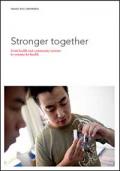
Resource | Publications,
The world now has the ability to end AIDS as a public health threat by 2030. Doing so, however, will require a Fast-Track approach over the next five years, followed by sustained action until 2030. Leadership by governments can make ending the AIDS epidemic their legacy, but important decisions must be made soon.
This report is intended as a guide to governments, in particular ministers of health and finance, in making decisions on the integration of community responses to HIV in national AIDS plans, including budget allocations. Resilient systems for health that integrate community responses will be key to ending the AIDS epidemic by 2030.
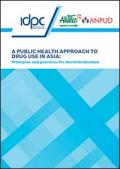
Resource | Publications,
In this report, the International Drug Policy Consortium (IDPC) offers recommendations based on evidence and examples of good practice to inform a shift in policy responses to drug use in Asia away from criminalisation and punishment, and towards public health and harm reduction. It describes effective approaches to the decriminalisation of drug use. It also discusses approaches implemented in Asia that have proven ineffective, such as the detention of people who use drugs in compulsory centres as a form of 'rehabilitation'.
The report is intended as a resource for policy makers, legislators, communities of people who use drugs and civil society organisations in Asia. The overall goal of the report is to offer guidance on steps that countries can undertake to develop drug policies that achieve better public health outcomes, by shifting away from the criminalisation and punishment of people who use drugs. It also describes legal and policy responses to drugs that are not effective, such as the detention of people who use drugs in compulsory centres for drug users, forced urine testing, compulsory registration and other punitive measures.
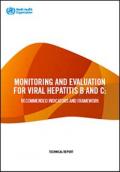
Resource | Publications,
To monitor and evaluate the Global Health Sector Strategy (GHSS) on viral hepatitis, the World Health Organization (WHO) proposes a monitoring and evaluation framework. This framework should facilitate collection and analysis of standardized data with a balance between the need to remain parsimonious and obtain the minimum information required.
The result chain is a logical framework built along a sequence of inputs (e.g. resources, infrastructure) and processes (e.g. training, logistics systems) that translate into outputs (e.g. availability of services and interventions), which lead to outcomes (e.g. intervention coverage) and, ultimately, to impact (e.g. mortality).

Resource | Publications,
The "Cascade of HIV Testing, Care and Treatment Services, 2013 & 2014: Selected Country Profiles" highlights progress toward the goal to end the AIDS epidemic by 2030. Country profiles consist of key indicators for monitoring the national HIV response, including progress towards the 90-90-90 treatment targets and the tracking of patients across the cascade of HIV services for all people living with HIV, women and children receiving services to prevent parent-to-child transmission, and coinfected tuberculosis and HIV cases. Selected countries, demonstrating the diversity of HIV epidemics across the Western Pacific Region, include Cambodia, China, Lao People's Democratic Republic, Malaysia, Mongolia, Papua New Guinea and Viet Nam.





